Numerical Analysis and Experimental Investigation of Cavitating Flows Considering Thermal and Compressibility Effects
Abstract
:1. Introduction
2. Numerical Methods
3. Hot Water Test Case
3.1. Hot Water Test Case Setup
3.2. Hot Water Test Case Results
4. Steady Cavitation Test Case
4.1. Steady Cavitation Test Case Setup
4.2. Steady Cavitation Test Case Results
5. Partial Cavity Oscillation on the Hydrofoil
5.1. Case Description
5.2. Results
6. Discussion
Author Contributions
Funding
Institutional Review Board Statement
Informed Consent Statement
Data Availability Statement
Acknowledgments
Conflicts of Interest
References
- Tsujimoto, Y. Cavitation Instabilities in Turbopump Inducers. In Fluid Dynamics of Cavitation and Cavitating Turbopumps, 2007th ed.; d’Agostino, L., Salvetti, M.V., Eds.; Springer, Wien: New York, NY, USA, 2007; pp. 169–190. [Google Scholar]
- Tsujimoto, Y.; Watanabe, S.; Horiguchi, H. Cavitation Instabilities of Hydrofoils and Cascades. Int. J. Fluid Mach. Syst. 2008, 1, 38–46. [Google Scholar] [CrossRef]
- E Brennen, C. A review of the dynamics of cavitating pumps. IOP Conf. Ser. Earth Environ. Sci. 2012, 15, 012001. [Google Scholar] [CrossRef]
- Kobayashi, K.; Chiba, Y. Computational Fluid Dynamics of Cavitating Flow in Mixed Flow Pump with Closed Type Impeller. Int. J. Fluid Mach. Syst. 2010, 3, 113–121. [Google Scholar] [CrossRef]
- Sedlar, M.; Sputa, O.; Komarek, M. CFD Analysis of Cavitation Phenomena in Mixed-Flow Pump. Int. J. Fluid Mach. Syst. 2012, 5, 18–29. [Google Scholar] [CrossRef]
- Reisman, G.E.; Brennen, C.E. Shock wave measurements in cloud cavitation. In Proceedings of the 21st International Symposium on Shock Waves, Great Keppel Island, Australia, 20–25 July 1997; p. 1570. [Google Scholar]
- Sedlář, M.; Komárek, M.; Rudolf, P.; Kozák, J.; Huzlik, R. Numerical and experimental research on unsteady cavitating flow around NACA 2412 hydrofoil. IOP Conf. Ser. Mater. Sci. Eng. 2015, 72, 022014. [Google Scholar] [CrossRef]
- Sedlar, M.; Ji, B.; Kratky, T.; Rebok, T.; Huzlik, R. Numerical and experimental investigation of three-dimensional cavitating flow around the straight NACA2412 hydrofoil. Ocean Eng. 2016, 123, 357–382. [Google Scholar] [CrossRef]
- Yamaguchi, Y.; Iga, Y. Thermodynamic Effect on Cavitation in High Temperature Water. In Proceedings of the Fluids Engineering Division Summer Meeting, Chicago, IL, USA, 3–7 August 2014. [Google Scholar] [CrossRef]
- Petkovšek, M.; Dular, M. Experimental study of the thermodynamic effect in a cavitating flow on a simple Venturi geometry. J. Phys. Conf. Ser. 2015, 656, 012179. [Google Scholar] [CrossRef]
- Cervone, A.; Bramanti, C.; Rapposelli, E.; d’Agostino, L. Thermal Cavitation Experiments on a NACA 0015 Hydrofoil. J. Fluids Eng. 2006, 128, 326–331. [Google Scholar] [CrossRef]
- Iga, Y.; Furusawa, T.; Sasaki, H. Interaction Between Thermodynamic Suppression Effect and Reynolds Number Promotion Effect on Cavitation in Hot Water; ASME Press: New York, NY, USA, 2018; pp. 576–580. [Google Scholar] [CrossRef] [Green Version]
- Zhang, H.; Zuo, Z.; Mørch, K.A.; Liu, S. Thermodynamic effects on Venturi cavitation characteristics. Phys. Fluids 2019, 31, 097107. [Google Scholar] [CrossRef]
- Niiyama, K.; Yoshida, Y.; Hasegawa, S.; Watanabe, M.; Oike, M. Experimental Investigation of Thermodynamic Effect on Cavitation in Liquid Nitrogen. In Proceedings of the 8th International Symposium on Cavitation, Singapore, 13–16 August 2012; pp. 153–157. [Google Scholar] [CrossRef]
- Zhu, J.; Xie, H.; Feng, K.; Zhang, X.; Si, M. Unsteady cavitation characteristics of liquid nitrogen flows through venturi tube. Int. J. Heat Mass Transf. 2017, 112, 544–552. [Google Scholar] [CrossRef]
- Tsuda, S.-I.; Watanabe, S. CFD Simulation of Thermodynamic Effect Using a Homogeneous Cavitation Model Based on Method of Moments; ASME Press: New York, NY, USA, 2018; pp. 249–252. [Google Scholar] [CrossRef]
- Franc, J.-P.; Pellone, C. Analysis of Thermal Effects in a Cavitating Inducer Using Rayleigh Equation. J. Fluids Eng. 2007, 129, 974–983. [Google Scholar] [CrossRef]
- Chen, T.R.; Wang, G.Y.; Huang, B.; Li, D.Q.; Ma, X.J.; Li, X.L. Effects of physical properties on thermo-fluids cavitating flows. J. Phys. Conf. Ser. 2015, 656, 012181. [Google Scholar] [CrossRef]
- Wang, S.; Zhu, J.; Xie, H.; Zhang, F.; Zhang, X. Studies on thermal effects of cavitation in LN2 flow over a twisted hydrofoil based on large eddy simulation. Cryogenics 2019, 97, 40–49. [Google Scholar] [CrossRef]
- Shi, S.; Wang, G. Thermal Effects on Cryogenic Cavitating Flows around an Axisymmetric Ogive. Int. J. Fluid Mach. Syst. 2010, 3, 324–331. [Google Scholar] [CrossRef]
- Liang, W.; Chen, T.; Huang, B.; Wang, G. Thermodynamic analysis of unsteady cavitation dynamics in liquid hydrogen. Int. J. Heat Mass Transf. 2019, 142, 118470. [Google Scholar] [CrossRef]
- Viitanen, V.M.; Sipilä, T.; Sánchez-Caja, A.; Siikonen, T. Compressible Two-Phase Viscous Flow Investigations of Cavitation Dynamics for the ITTC Standard Cavitator. Appl. Sci. 2020, 10, 6985. [Google Scholar] [CrossRef]
- Ghahramani, E.; Ström, H.; Bensow, R. Numerical simulation and analysis of multi-scale cavitating flows. J. Fluid Mech. 2021, 922, A22. [Google Scholar] [CrossRef]
- Zhang, H.; Zuo, Z.; Liu, S. Influence of Dissolved Gas Content on Venturi Cavitation at Thermally Sensitive Conditions; ASME Press: New York, NY, USA, 2018; pp. 546–550. [Google Scholar] [CrossRef]
- Brandao, F.; Bhatt, M.; Mahesh, K. Effects of Non-Condensable Gas on Cavitating Flow Over a Cylinder. In Proceedings of the 10th International Symposium on Cavitation, Baltimore, MD, USA, 14–16 May 2018; pp. 346–351. [Google Scholar] [CrossRef]
- ANSYS CFX-Solver Theory Guide Release 2020 R1—©; ANSYS, Inc.: Canonsburg, PA, USA, 2020.
- Zwart, P.J.; Gerber, A.G.; Belamri, T. A Two-Phase Flow Model for Predicting Cavitation Dynamics. In Proceedings of the Fifth International Conference on Multiphase Flow, Yokohama, Japan, 30 May 2004; Volume 152. [Google Scholar]
- Menter, F.; Egorov, Y. A Scale Adaptive Simulation Model using Two-Equation Models. In Proceedings of the 43rd AIAA Aerospace Sciences Meeting and Exhibit, Reno, NV, USA, 10–13 January 2005. [Google Scholar] [CrossRef]
- Menter, F.; Kuntz, M.; Bender, R. A Scale-Adaptive Simulation Model for Turbulent Flow Predictions. In Proceedings of the 41st Aerospace Sciences Meeting and Exhibit, Reno, NV, USA, 6–9 January 2003. [Google Scholar] [CrossRef]
- Menter, F.; Schütze, J.; Kurbatskii, K.; Lechner, R.; Gritskevich, M.S.; Garbaruk, A. Scale-Resolving Simulation Techniques in Industrial CFD. In Proceedings of the 6th AIAA Theoretical Fluid Mechanics Conference, Honolulu, HI, USA, 27–30 June 2011; pp. 2011–3474. [Google Scholar]
- Le, A.D.; Iga, Y. A simplified thermodynamic effect model for cavitating flow in hot water. IOP Conf. Ser. Earth Environ. Sci. 2019, 240, 062024. [Google Scholar] [CrossRef]
- Sedlář, M.; Komárek, M.; Vyroubal, M.; Muller, M. Experimental and numerical analysis of cavitating flow around a hydrofoil. EPJ Web Conf. 2012, 25, 01084. [Google Scholar] [CrossRef]
- Wagner, W.; Cooper, J.R.; Dittmann, A.; Kijima, J.; Kretzschmar, H.-J.; Kruse, A.; Mareš, R.; Oguchi, K.; Sato, H.; Stöcker, I.; et al. The IAPWS Industrial Formulation 1997 for the Thermodynamic Properties of Water and Steam. ASME J. Eng. Gas Turbines Power 2000, 122, 150–184. [Google Scholar] [CrossRef]


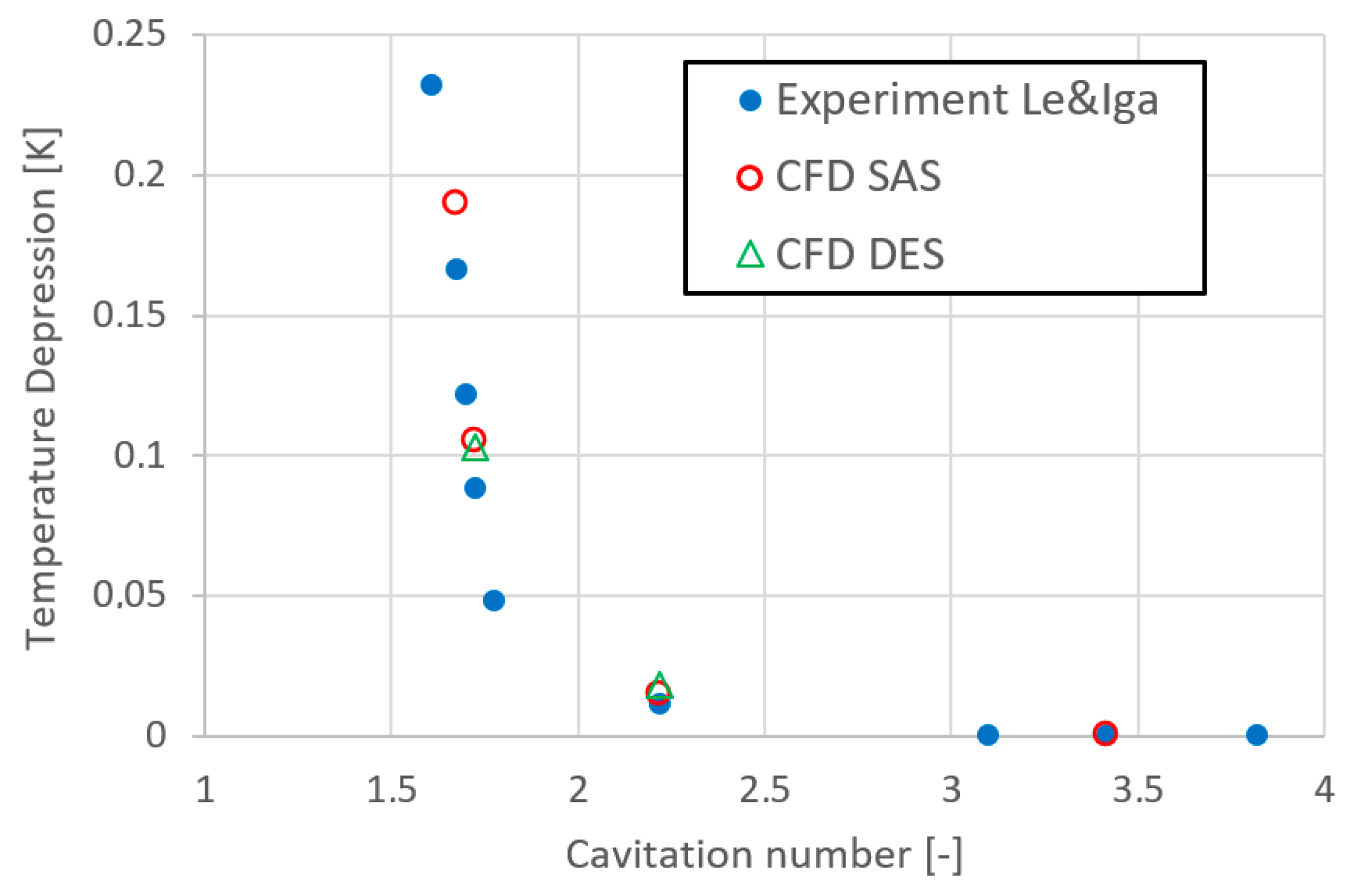







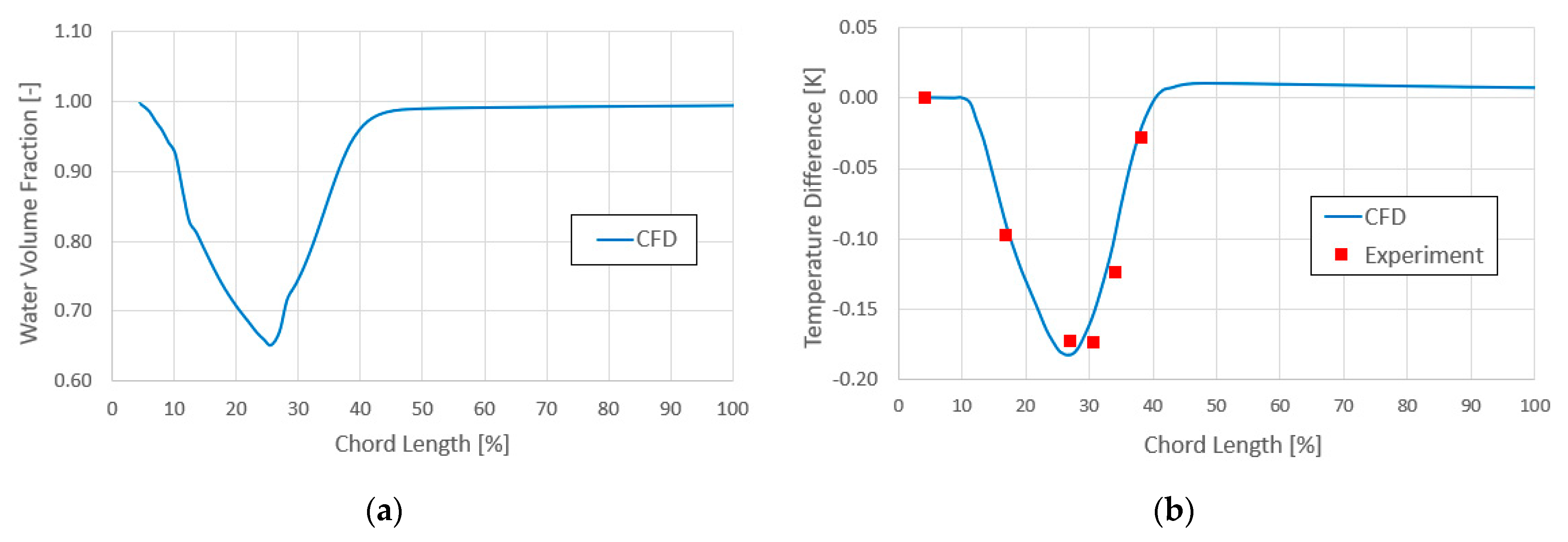



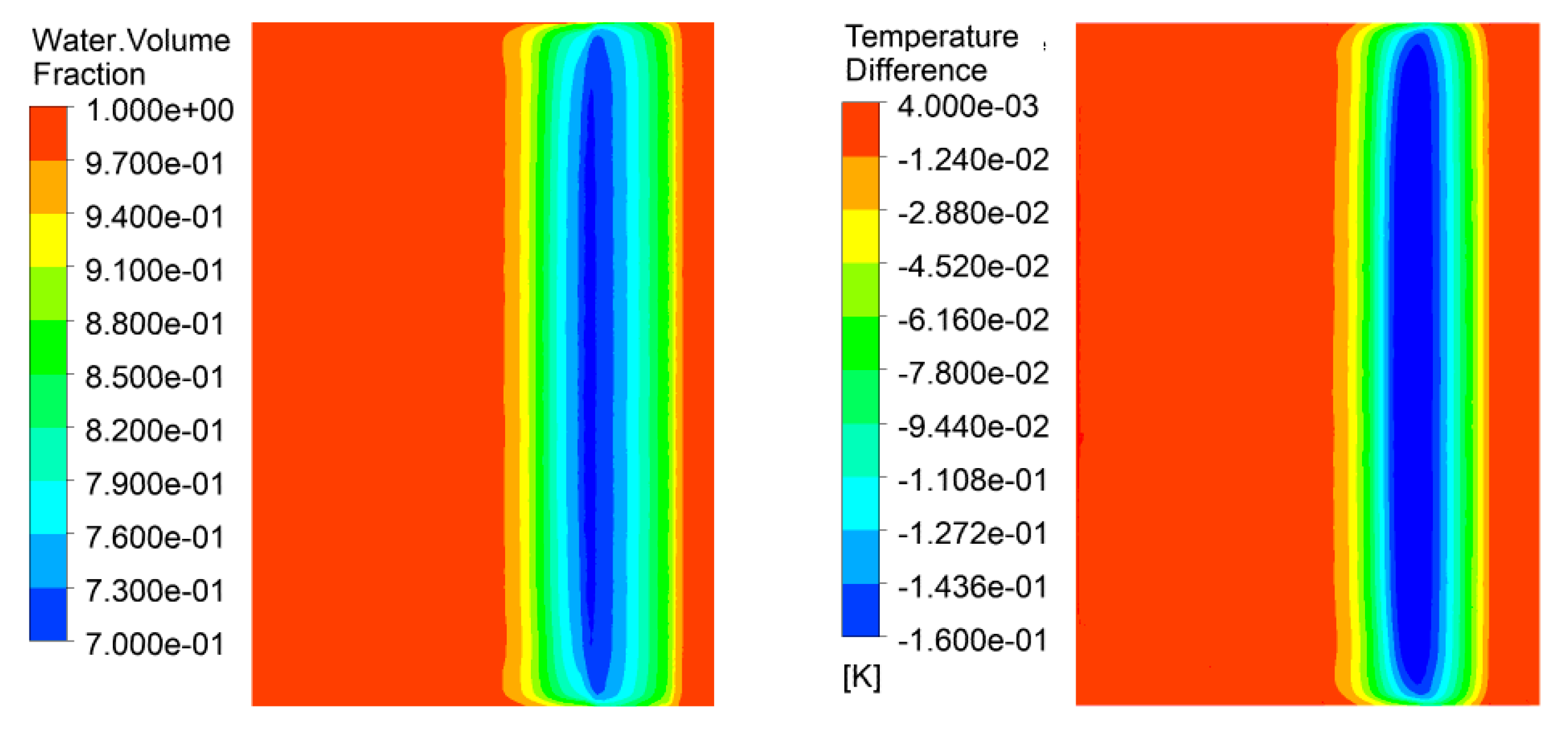

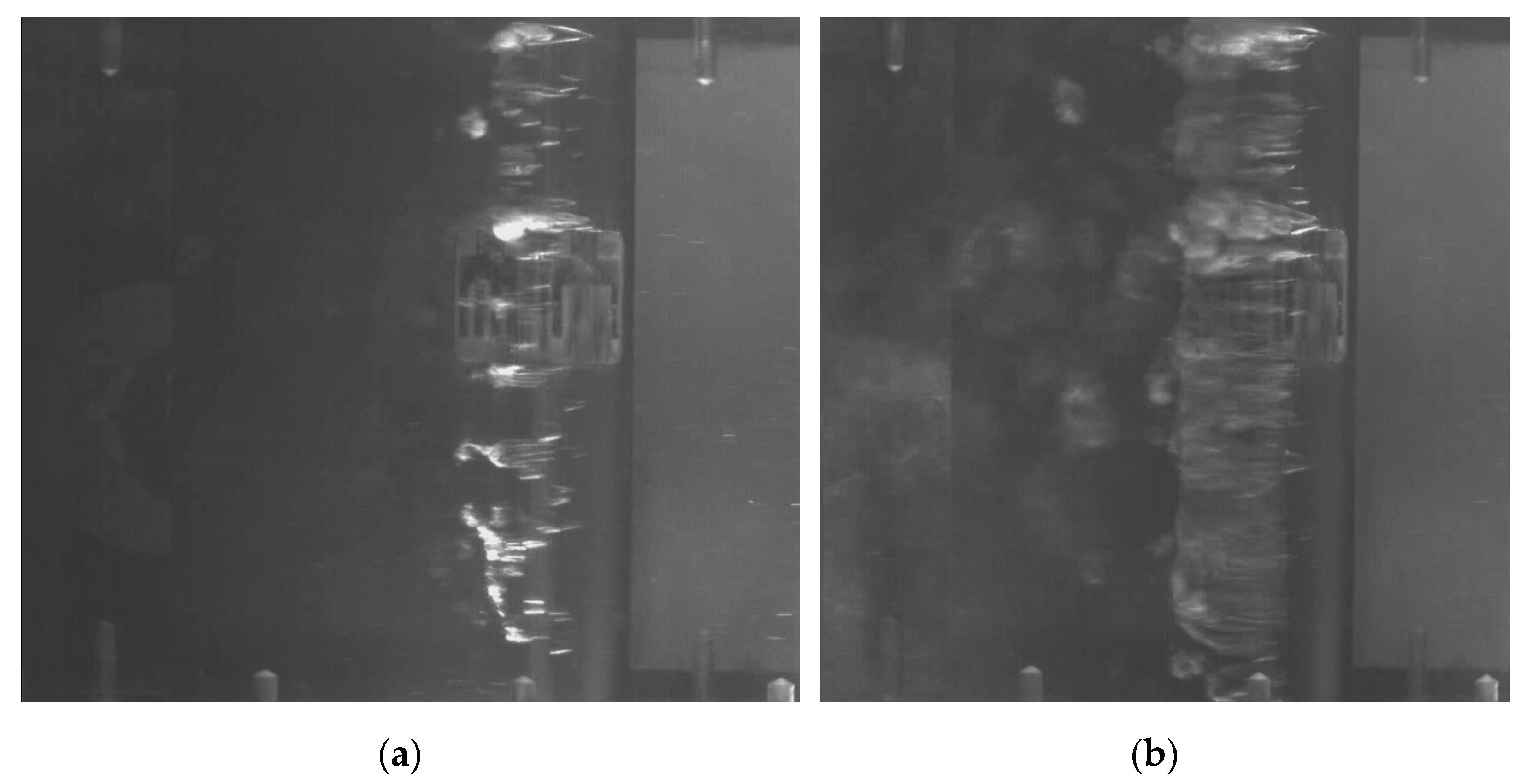
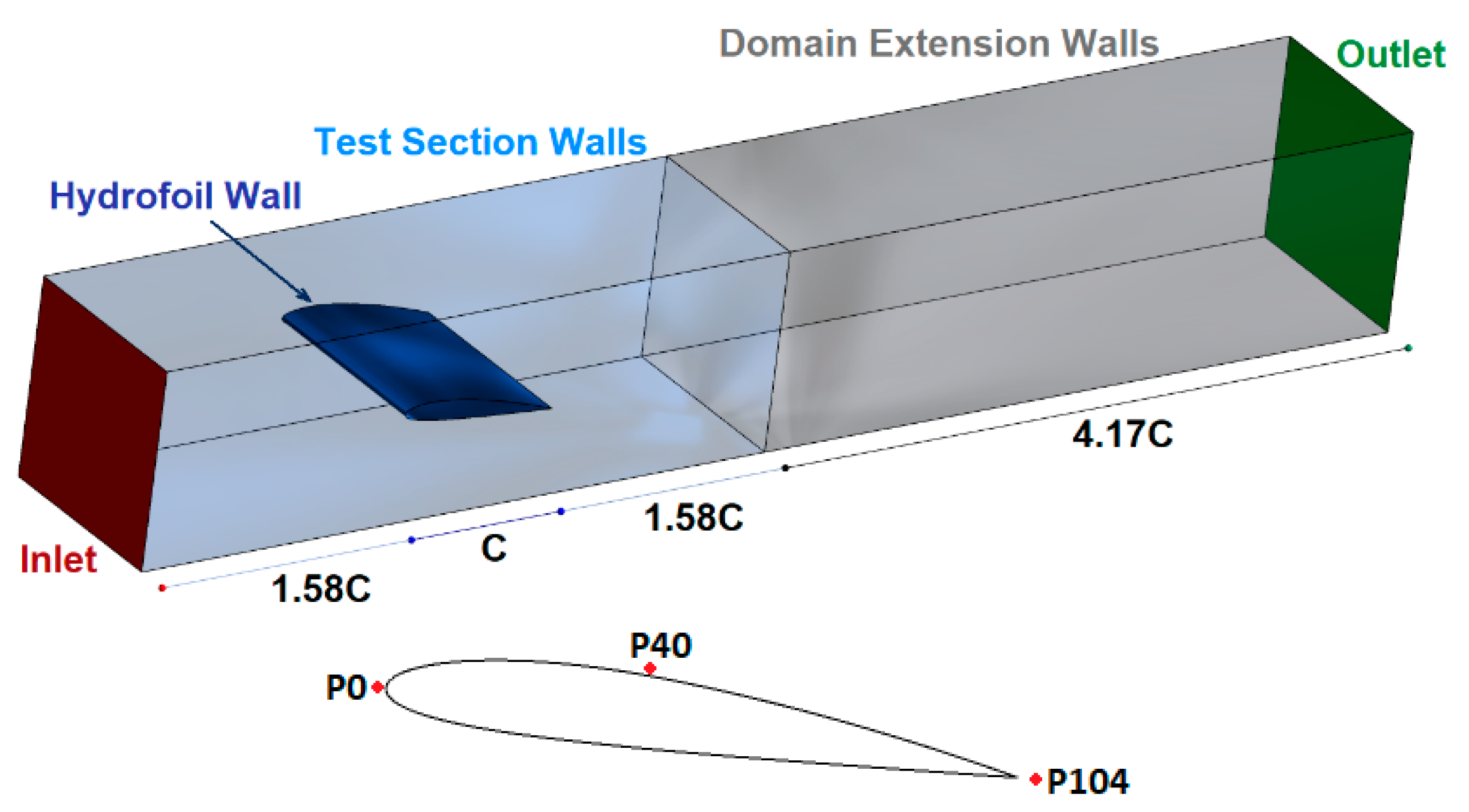


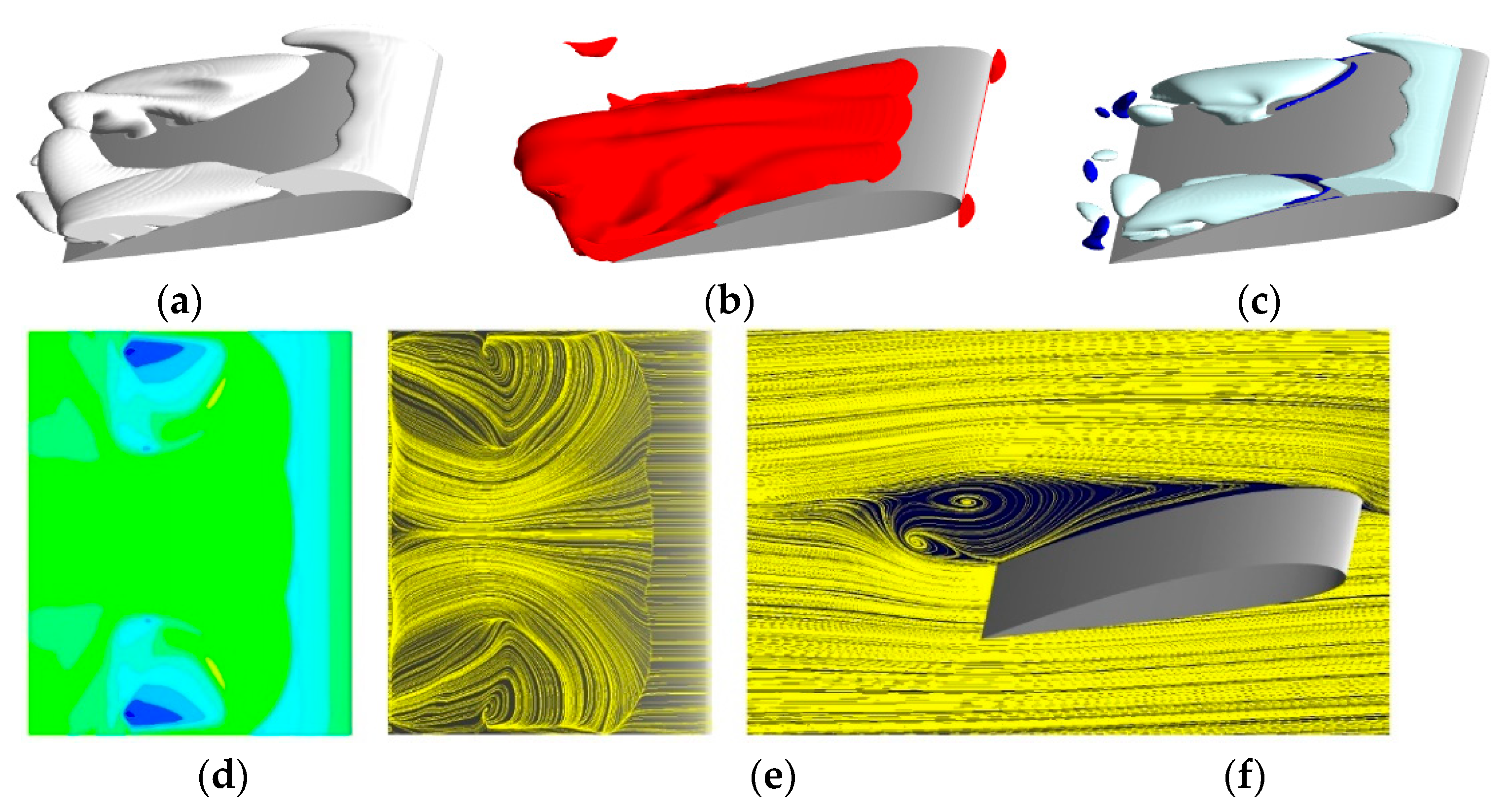

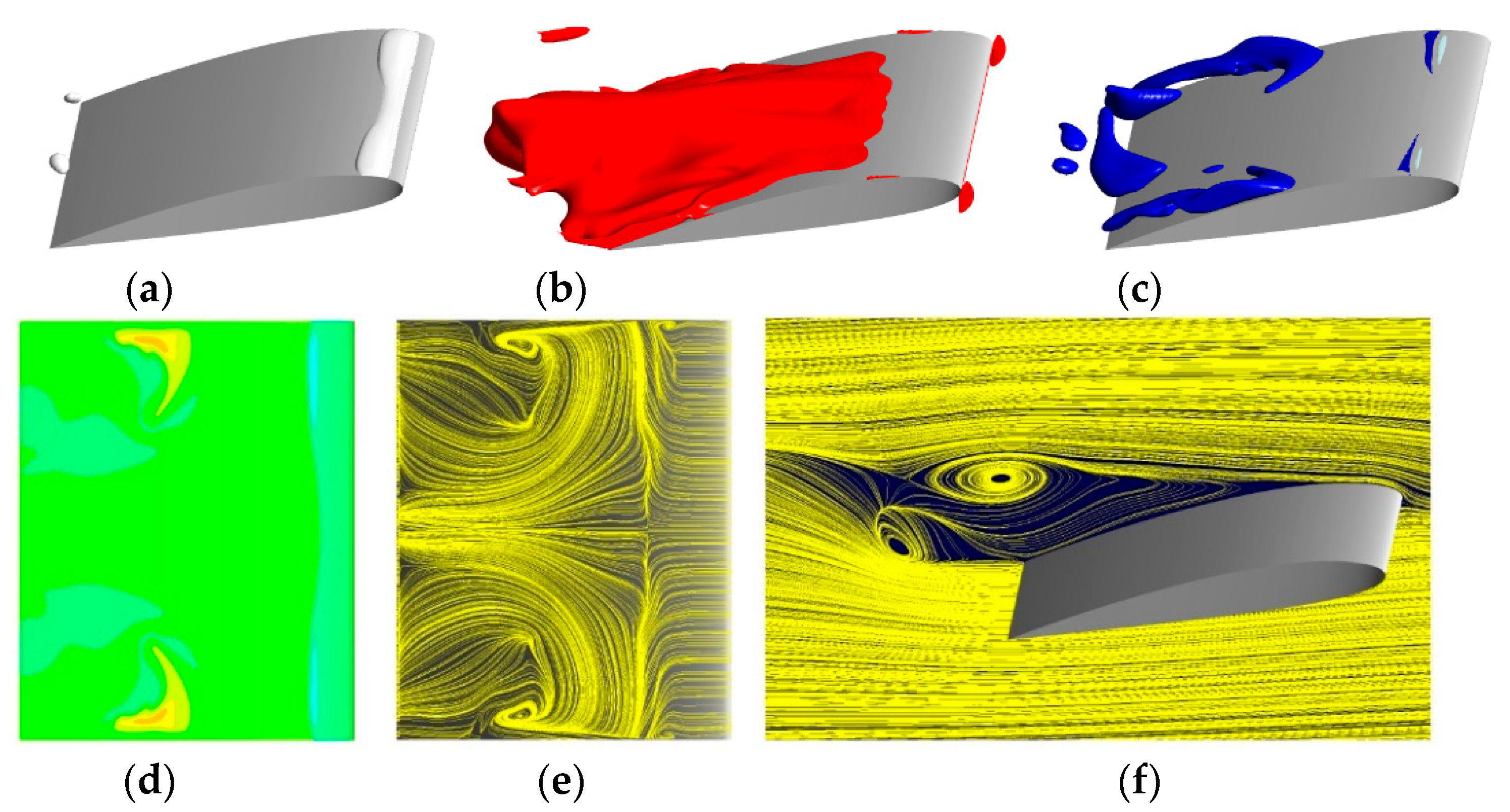
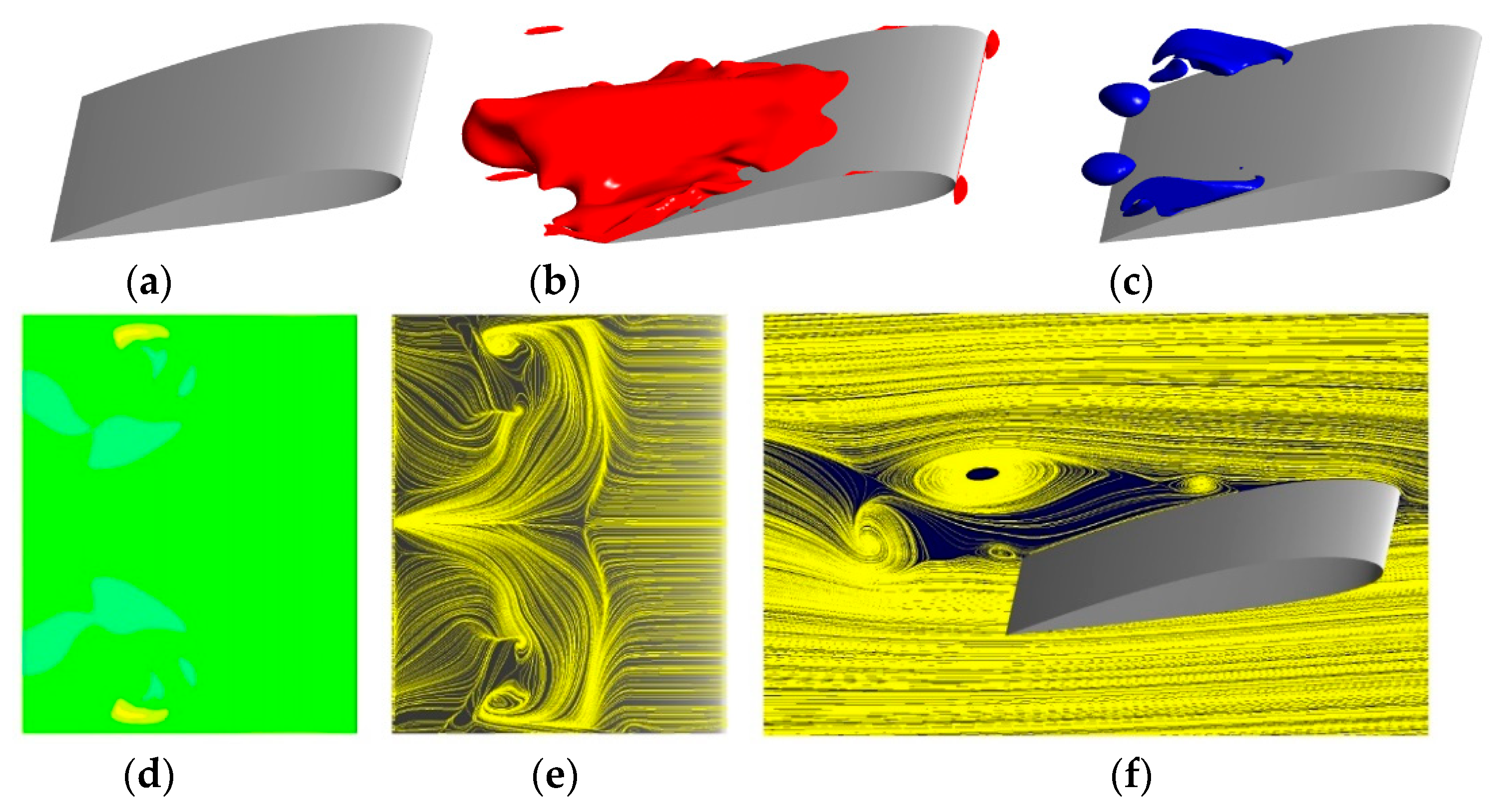
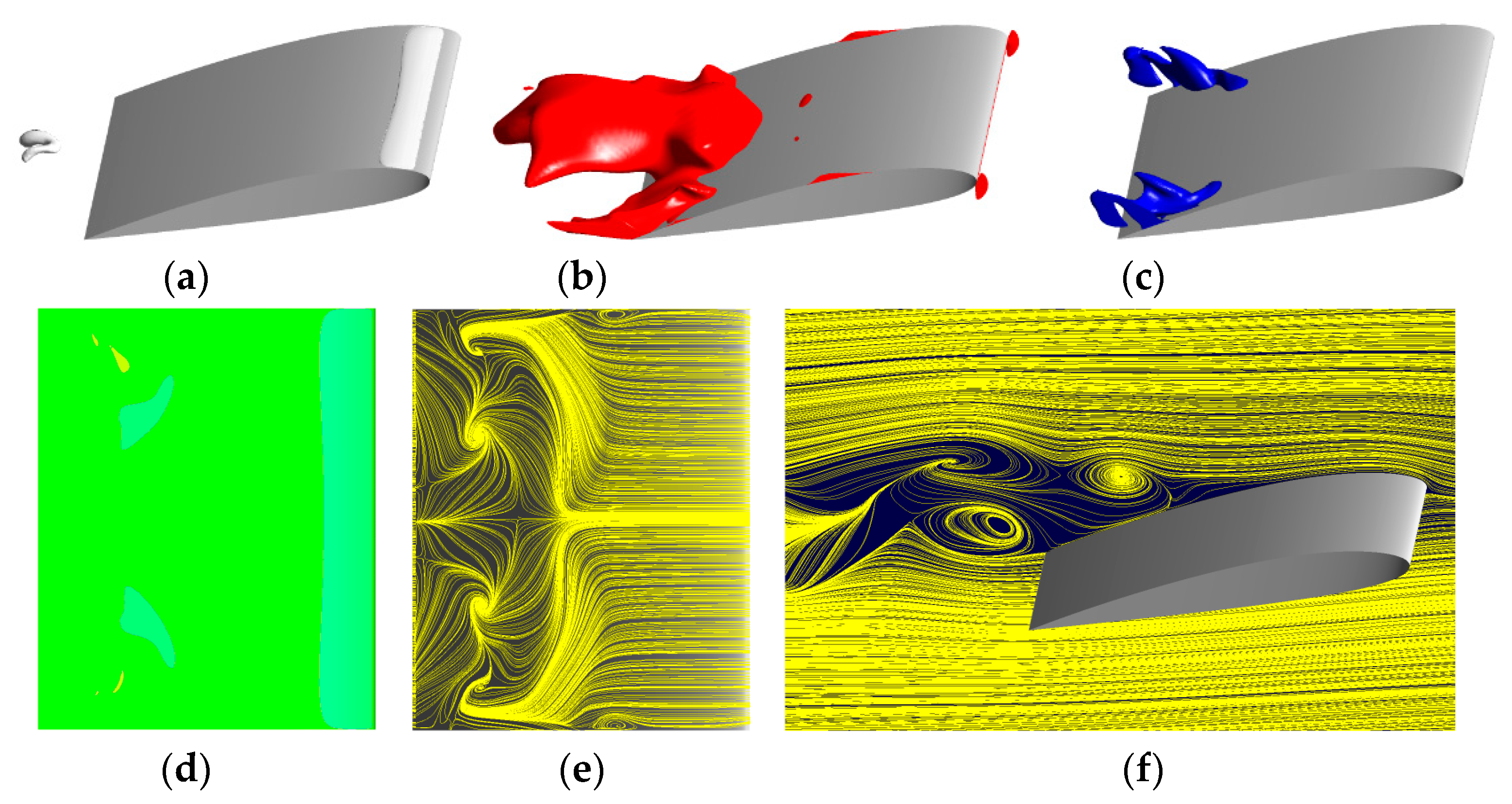


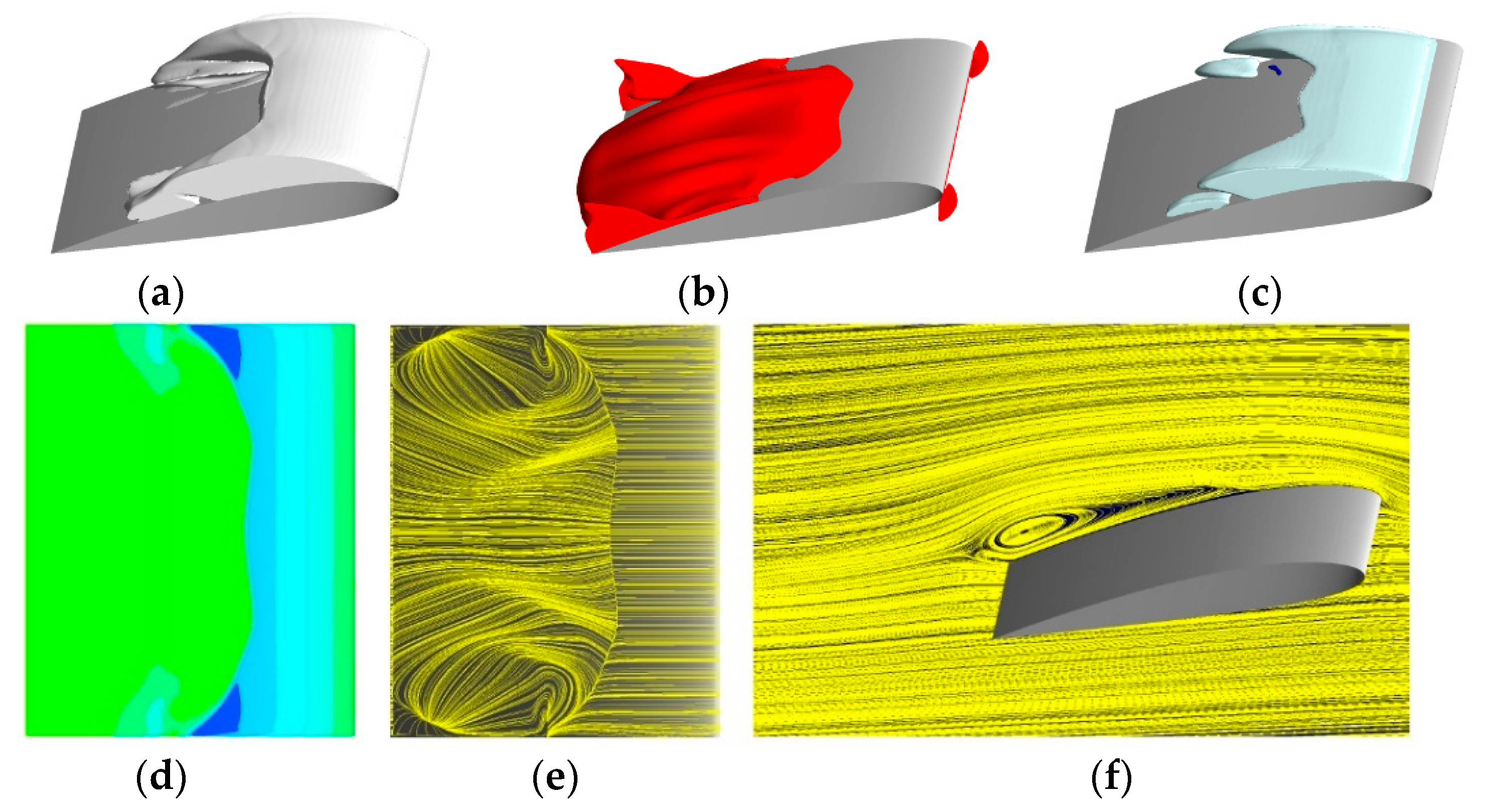
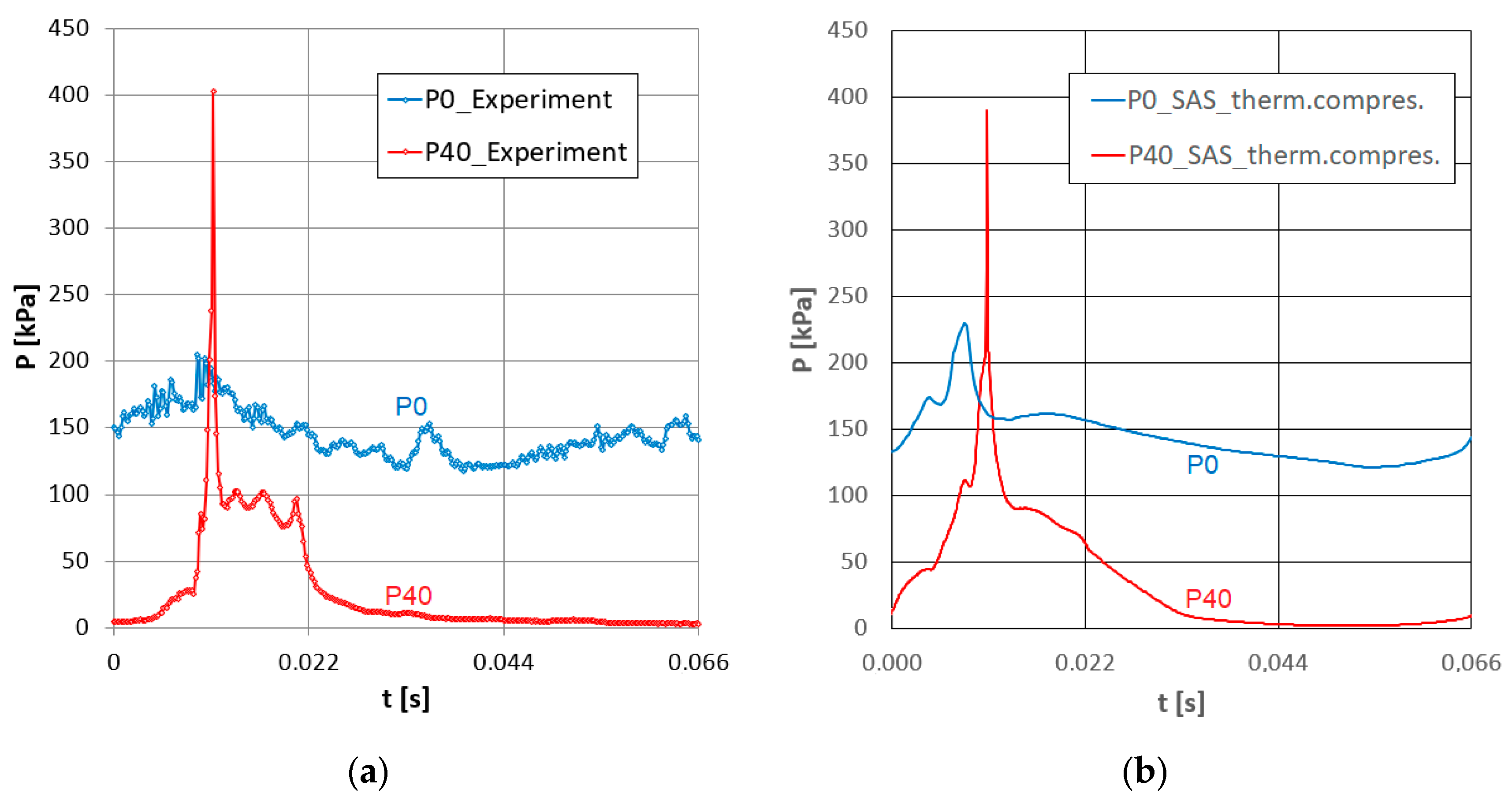

Publisher’s Note: MDPI stays neutral with regard to jurisdictional claims in published maps and institutional affiliations. |
© 2022 by the authors. Licensee MDPI, Basel, Switzerland. This article is an open access article distributed under the terms and conditions of the Creative Commons Attribution (CC BY) license (https://creativecommons.org/licenses/by/4.0/).
Share and Cite
Sedlář, M.; Krátký, T.; Komárek, M.; Vyroubal, M. Numerical Analysis and Experimental Investigation of Cavitating Flows Considering Thermal and Compressibility Effects. Energies 2022, 15, 6503. https://doi.org/10.3390/en15186503
Sedlář M, Krátký T, Komárek M, Vyroubal M. Numerical Analysis and Experimental Investigation of Cavitating Flows Considering Thermal and Compressibility Effects. Energies. 2022; 15(18):6503. https://doi.org/10.3390/en15186503
Chicago/Turabian StyleSedlář, Milan, Tomáš Krátký, Martin Komárek, and Michal Vyroubal. 2022. "Numerical Analysis and Experimental Investigation of Cavitating Flows Considering Thermal and Compressibility Effects" Energies 15, no. 18: 6503. https://doi.org/10.3390/en15186503





